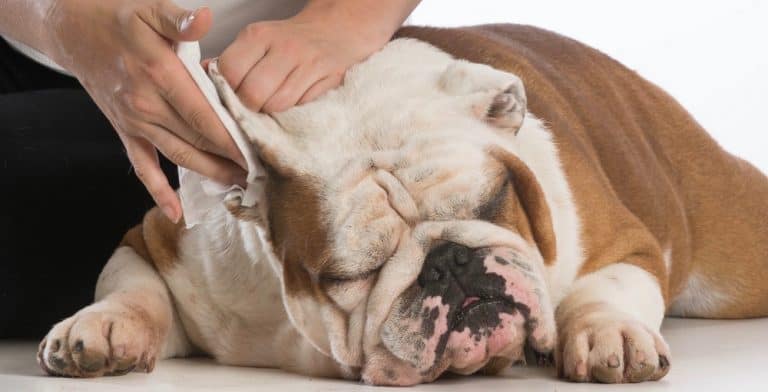How To Treat A Dog Nail Separated From The Quick (Dog Nail Exposed)
Dog nail separated from the quick is a very common dog injury. It can be very upsetting and difficult to accept when you realize that your dog is in pain from a nail injury.
As a dog owner, it is your responsibility to ensure that the injury heals well while also comforting them.
Ultimately, you need to visit your vet to treat a dog nail that has been broken, but there are things you can do at home to treat it.
Knowing what causes the nail to break, symptoms that indicate your dog’s nail is broken, and how to take care of a broken nail is very necessary for every dog owner.
Read on to find out how you can treat a dog nail that is damaged or broken.
What Is The Quick?
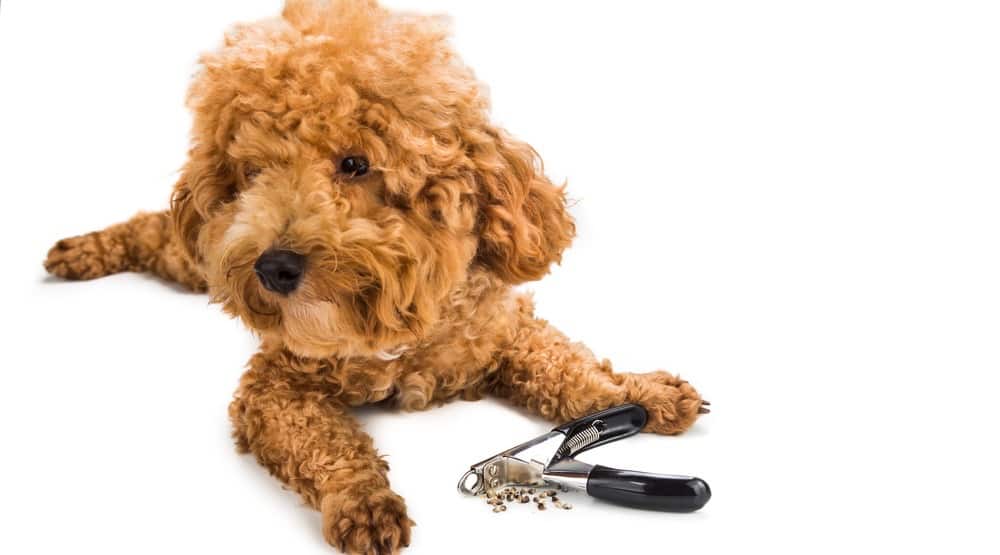
Dog’s Nails Have Two Major Parts:
- First is the quick, which contains nerves and blood supply that sustain the nail. This part is normally pink if your dog has white nails but can be dark if the nails are black.
- The second part is the nail itself which is usually white.
If the nail is damaged and separated, your dog will experience a lot of pain because of the blood vessels and nerves in the quick. Your dog can also experience heavy bleeding when the blood vessels are wounded.
It can be hard to find the quick if your dog has black nails. But you can determine the location of the quick by finding the pulp, which is a dark circular part that appears before the quick.
What Causes A Dog’s Nail To Break?
There are different ways that dogs injure their nails. Daily actions can cause your dog’s nail to break, from a hard landing when your dog hops on a hard surface when walking to a snag on the carpet when playing, making it difficult to predict when it is going to happen.
When your dog gets older, their nails become dry and brittle, and the risk of breakage increases.
If your dog’s nails are longer than average, they can snag more easily leading to breakage. Also, your dog nail can be injured if you trim it too close to the quick. The nail may bleed, and your dog will start yelping.
Therefore, ensure that your dog’s nails are not too long to avoid breakage.
Symptoms Of A Dog Nail Separated From The Quick
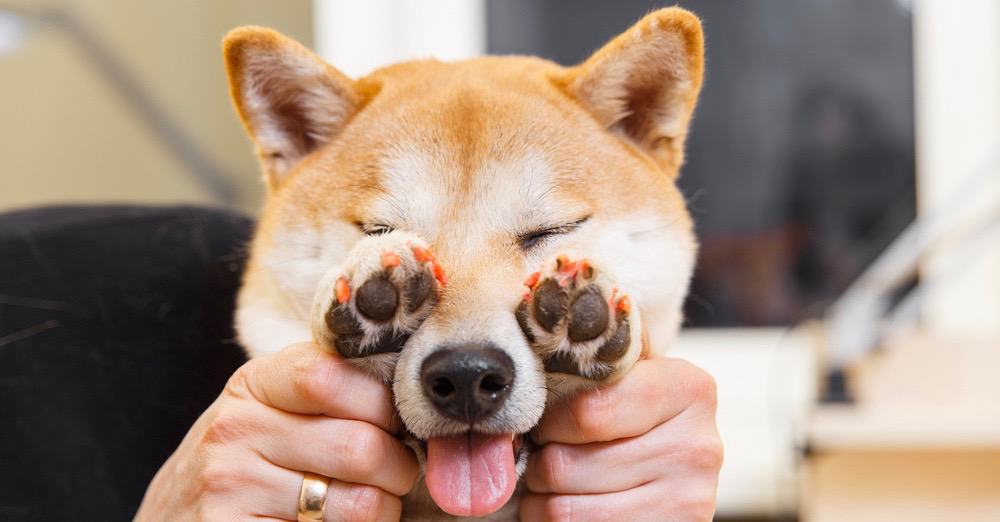
Since the nail bed of your dog is a very sensitive area, your dog will alert you vocally if they are experiencing any nail split or break.
Other symptoms include a swollen paw, excessive licking, some bleeding, some limping, bloody puss, and oozing puss.
If your dog’s nail is not bleeding even though it has been damaged, it does not mean that they do not need medical attention. An exposed quick and broken nail has a higher risk of infection and requires immediate treatment.
Equipment Needed To Properly Take Care Of Dog’s Nails
The following equipment will help in preventing damage during nail trimming:
- A good pair of nail trimmers or clippers puts less pressure on the nails making them less likely to break or snap.
- Styptic gels, powders, and pencils should be included in your dog’s first aid kit as they help stop the bleeding.
How To Treat An Injured Nail (Dog Nail Quick Exposed)
If your dog’s nail is injured, you must treat it quickly and bandage the wound even though the process can make your dog uncomfortable.
A dog nail quick exposed is an open wound and susceptible to infection because your dog’s paws constantly encounter bacteria during walks.
The following are the steps to take when treating an injured nail:
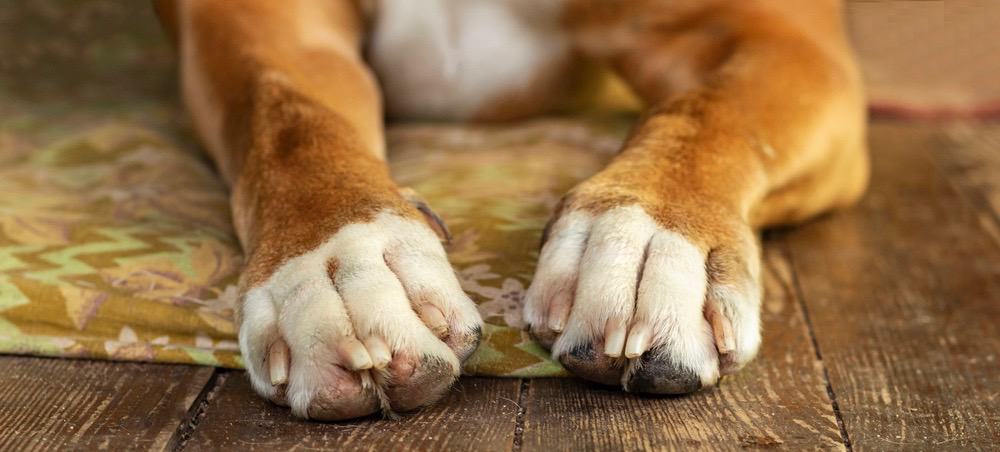
Restrain your Dog
Have a family member or a friend hold your dog when tending to the nail. Be prepared to respond quickly because dogs in pain can bite, even the kind ones.
It will be helpful if your dog is trained to wear a muzzle, as you can put it in their mouth before starting the process.
You can also hug your dog as a way of providing restraint as it will make them feel secure and be immobilized.
Inspect the Area
The paw and nail area can be swollen, red, or irritated. First, you need to observe without touching your dog or the paw.
Assess the area to find out whether there is active bleeding, or the nail is still attached. The nail should be removed if it is still attached.
You may notice an exposed tissue that is like a fleshy pulp. This is the quick and it holds both the blood vessels and nerves.
Your dog will not like you touching this area because it is very sensitive.
Stop the Bleeding
Start the process by ensuring the bleeding is stopped. One way to stop the bleeding is to wrap a clean towel tightly and maintain pressure for about two minutes.
If the bleeding does not stop, apply a styptic pencil, or silver nitrate stick which you can find at a local pet store or the first aid section in a human pharmacy.
You can cover the nail with flour or baking powder if you do not have these products. Also, you can stick the nail tip into a soap bar to stop the bleeding.
Remove a Portion of the Nail
The nail will need to be removed if it is split in half. Additionally, your dog will continue experiencing pain until the nail is removed.
The removal can be painful for your dog, but they will experience relief afterward.
Speak to your vet for help if you are not sure about removing the nail promptly. Your vet can help you trim the part of the remaining nail if you are not confident about your dog not biting you so that the injury can heal cleanly.
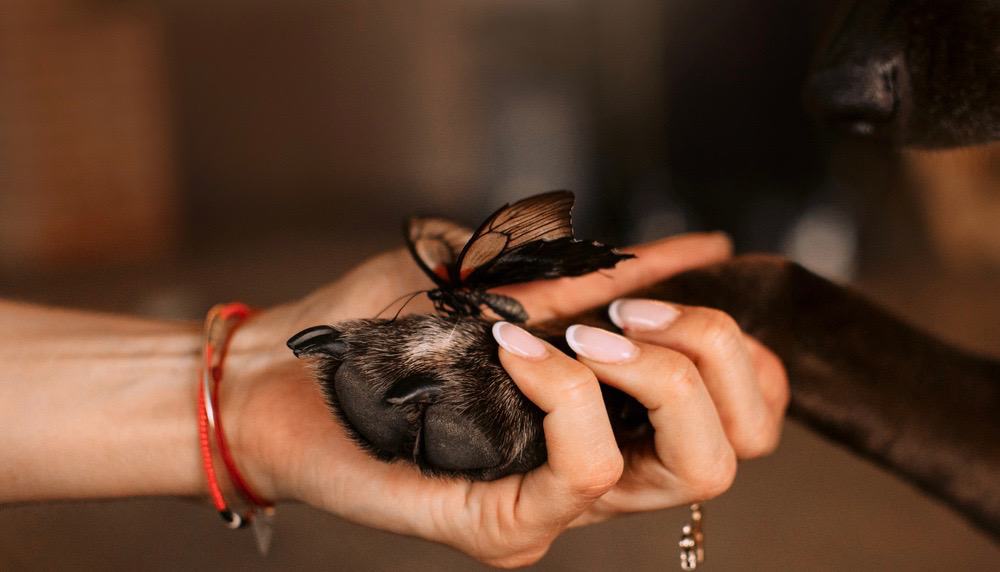
The broken or damaged part should be removed carefully. The process does not need any sedation as it can be done quickly even if it is painful.
However, numbing the area or/and sedation may be required depending on where the break is and the degree of pain.
To provide a good foundation for the nail to grow back and completely remove the damaged part, the nail should be trimmed just above the break.
Disinfect the Area to Prevent it From Infection
Rinse the injured paw with warm water to remove any debris or dirt. Afterward, apply a wound spray or pet antiseptic to the nail. These wound care items may provide numbing to your dog’s paws which can be comforting for your dog.
Your vet may apply antibiotic powder or ointment to minimize further bleeding and prevent contamination. Sometimes injectable or oral antibiotics can be administered.
Prevention is essential because the quick is attached to the bone, and bone infections can seriously affect your dog which requires only certain antibiotics to treat them.
Bandage the Paw
Loosely wrap your dog’s paws using a gauze, bandage, and first-aid tape to ensure it is covered.
If you do not have these items, slide the paw into a clean sock to ensure that the injured nail is protected, then tape the top part of the sock to prevent it from slipping off the foot.
Change the Bandage Daily and Keep the Area Clean
Regardless of whether you used a clean sock or gauze to cover the paw, ensure that it is changed daily and that the wound is not infected but clean. Infection can come in different forms such as discharging pus, swelling, or additional bleeding.
If the symptoms of infection last more than a day, talk to your vet so that they can give you antibiotics to stop the infection. The nail should heal nicely after several days of properly taking care of it.
If your dog can hold a down-stay, you can soak their paw in a mixture of warm water and an antiseptic and antimicrobial soap for 20 minutes two times per day.
Control the Pain
When the nail breaks, the quick is exposed, painful, and not protected by the keratin part of the nail. Your vet can prescribe medication for relieving pain to keep your dog comfortable.
How To Prevent Dog’s Nail From Breaking
Excessive rough play and longer nails often lead to split or broken nails in dogs. Additionally, nutrition can sometimes make nails weaker causing them to break easily.
Trimming your dog’s nails at least once per month will allow you to regularly check them.

If your dog’s nails are short, they are less likely to snag on outdoor or indoor rough ground.
If your nail trimming skills are not the best, ask your vet to give you a quick training session on how you can properly trim your dog’s nail.
You can also watch as your vet trim your dog’s nails then repeat the process at home.
If you cannot do the trimming completely, schedule a monthly nail trimming with a groomer and stick to the schedule to ensure that the proper length of the nails is maintained.
It can be difficult to closely clip your dog’s nails if they are naturally dark. You must use the right equipment and understand the procedure when trimming your dog’s nails.
Use nail clippers specifically made for dogs and avoid using dull nail trimmers as they can cause breakage.
Nutrition is another important aspect of having healthy nails. If your dog’s diet is lacking the right minerals and nutrients, their nails can break easily.
Therefore, ensure that you are feeding your dog high-quality food that includes fatty acids and oils. You can also ask your vet to recommend you fish oil supplements that can help your dog’s nail to grow thicker and stronger.
Since dog’s nails wear naturally on hard surfaces, it is recommended that you let your dog walk on concrete surfaces during your morning or evening strolls to keep the nails from growing longer.
Frequently Asked Questions (FAQs)

Why Are Broken Nails Such A Problem?
The nails of a dog are a collection of blood vessels called the “quick”. The nail end is surrounded by keratin for natural protection.
The quick connects to the bone, therefore, if infected because of splitting or breaking, it can lead to infections in the dog’s bone which is a potentially serious problem. Nails are also used daily and are therefore very exposed to wear and tear.
When Should We Go to The Vet?
Dog owners can treat their dog’s nail injury at home. The condition can temporarily be painful for the dog, but if you follow the home care protocol, the dog should recover in a few days.
However, if the injury shows any signs of infections like puss oozing from the nail, continual bleeding, or swelling, visit your visit immediately.
How To Keep A Dog From Chewing On The Bandage Or Sock?
If you find your dog licking or biting the bandage, distract them with a bone or an activity. Give your dog lots of attention to distract them from the irritation of having the bandage.
Apply the tape to bind the sock or bandage more securely to the foot of the dog so that it cannot slip easily.
Lastly, if you find that your tactics are not working, you can have the wound fitted with an Elizabethan cone/collar to keep your dog from licking the wound or removing the bandage.
Is A Broken Nail An Emergency?
A split or broken nail is not an emergency. However, it can be an issue if the nail is dangling or showing signs of an infection and may need vet interventions.
If the bleeding continues for a longer period, the loss of blood might be a concern and need a vet. Therefore, address your dog’s bleeding before cleaning or bandaging the wound.
Can A Dog’s Broken Nail Or Exposed Quick Heal On Its Own?
First-aid treatment and basic care can help heal your dog’s broken nail. If the broken nail is left unattended, an infection might occur and can potentially cause serious issues.
Washing it with warm water and applying antiseptic will help your dog recover faster. However, if anything unusual or abnormal occurs, schedule an appointment with your vet.
How Long Does It Take For Dog’s Nail To Grow Back And Cover The Quick?
It can take around two to three weeks for your dog’s nail to fully grow back and cover the quick. This is quite fast when compared to how a human’s nail grows.
Can A Dog With A Nail Injury Still Go On Walks?
You need to be careful if your dog’s nail is broken on how long you can walk for and where to take them. Avoid places that can make the wound dirty and infected such as woodlands walks or muddy grounds.
Avoid places like long grass where your dog could snag their nail easily. Limit to short toilet breaks until the nail heals fully.
For your limping dog, avoid trying to make them walk for far because it makes the wound worse by unsettling it.
When you come home after the walk, make sure you clean and dry your feet. Try buying your dog a special waterproof medical boot to reduce infection chances.
Can A Dog Die From A Broken Nail?
Your dog is unlikely to die from a broken nail because there is a good supply of blood to the dog’s nails. If the dog’s nail continues to bleed, it can seem worrying and life-threatening.
Your dog will not die, just apply pressure on the wound and get your dog to the vet immediately.
Final Words
Ensuring that your dog’s nails are maintained and trimmed, you can avoid trips to the vet which are not necessary. This will ensure that your dog is in a good shape, and you can save more money in the long run.
When your dog’s nail and quick are separated, your first instinct may be to panic but if you follow the above recommendations, your dog will be okay and recover quickly.




